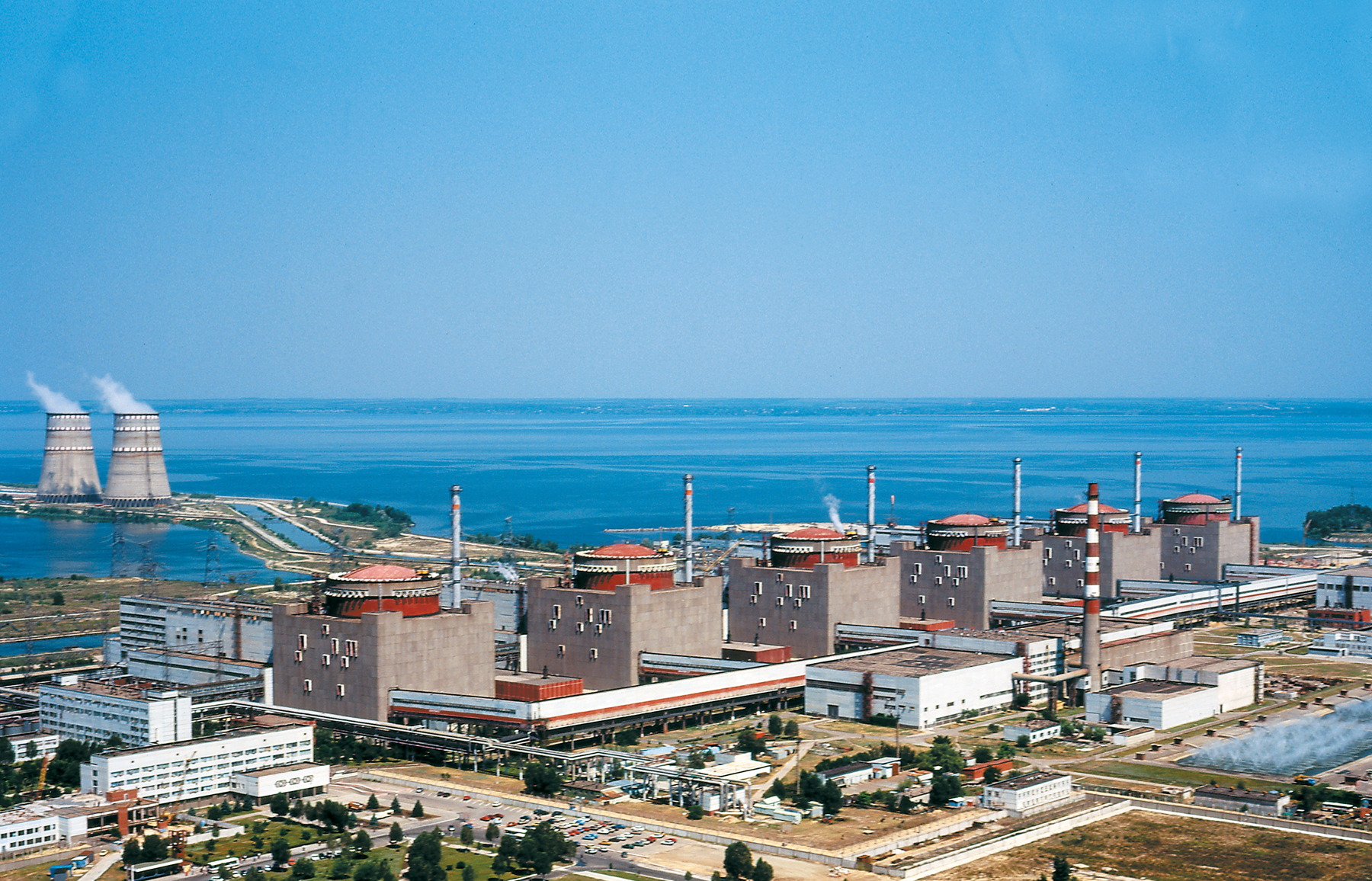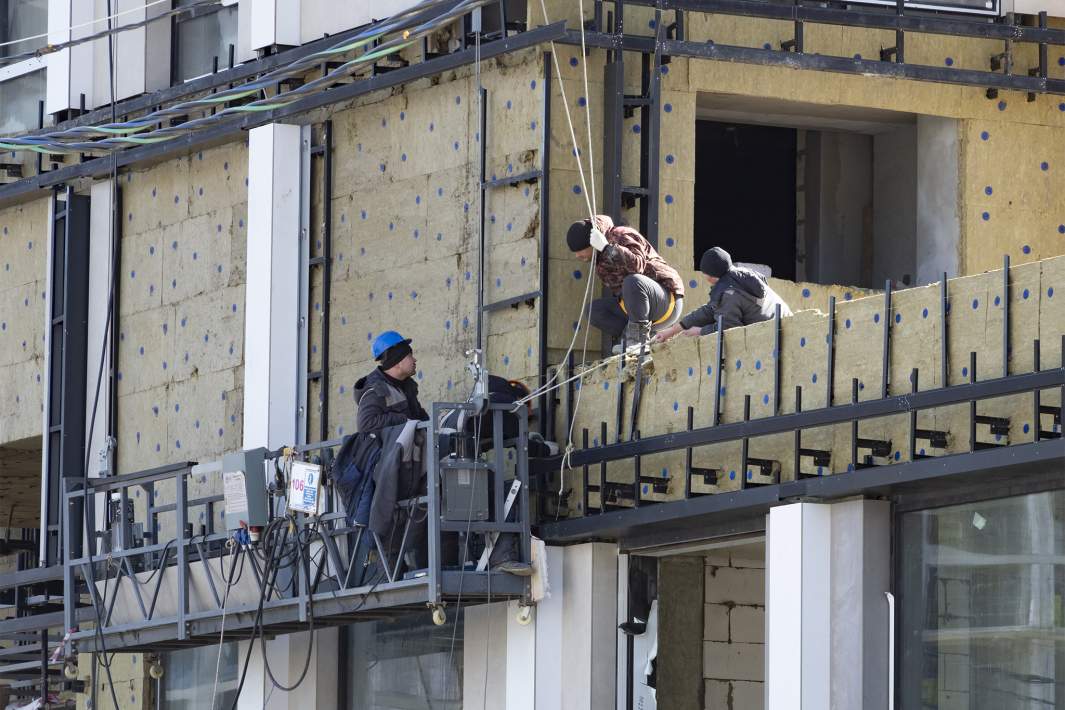
Russia Exploits Temporary Ceasefires at Ukraine Nuclear Plant
Russia Exploits Temporary Ceasefires at Ukraine Nuclear Plant
Executive Summary:
- Two temporary ceasefires between Ukraine and Russia occurred on October 23 and November 7 for repairs on opposite sides of the frontline to off-site power lines for the Russian-occupied Zaporizhzhia nuclear power plant (NPP).
- After successfully reconnecting the power lines to the plant, Russian forces again damaged the 750-kilovolt Dniprovska power line on November 14.
- From Moscow’s point of view, ceasefires serve its own goals rather than being a gesture toward genuine peace. Any meaningful ceasefire results or peace agreement can only be achieved when there are real measures of accountability and consequences for Russia.
Ukraine and Russia have declared two temporary ceasefires in the past month to repair essential power lines supplying off-site power to the Zaporizhzhia Nuclear Power Plant (NPP), which has been under Russian military occupation since March 2022. The ceasefires to repair the 750 kilovolt (kV) Dniprovska power line and the 330 kV Ferosplavna-1 power line were mediated by the International Atomic Energy Agency (IAEA). The locations of the damages required the Ukrainian and Russian expert teams to conduct repairs on opposite sides of the frontline (IAEA, October 18). Once the lines were repaired, however, Ukraine reported on November 14 that Russian forces yet again damaged the Dniprovska line, risking another safety crisis at the Zaporizhzhia NPP (RBC-Ukraine; Telegram/@Energoatom, November 14). Russia’s behavior in these temporary ceasefire situations illustrates potential commonalities in a broader ceasefire scenario. Meaningful results can only be achieved when there are real measures of accountability and consequences for Russia.
Zaporizhzhia NPP has been operating with two (Dniprovska and Fersplavna-1) of its original 10 off-site power lines since Russia’s full-scale invasion. Since then, a total of 10 loss-of-off-site-power (LOOP) outages have occurred at Zaporizhzhia NPP (IAEA, 2012; Facebook/@Svitlana Grynchuk, October 23). The most recent was a three-hour-and-34-minute blackout on July 4 (see EDM, July 11). NPPs rely on off-site power for safety systems and operations, including powering the cooling system for nuclear reactors, making any LOOP particularly dangerous (IAEA, 2012). The requirement for at least two off-site power lines is intended to reduce the likelihood of blackouts caused by frequent or prolonged LOOP outages (IAEA, 2012). Zaporizhzhia NPP has been operating with just one off-site power line, Dniprovska, since May, when the Ferosplavna-1 line was damaged by Russian shelling launched from the occupied Zaporizhzhia oblast, according to Ukraine’s Ministry of Energy (IAEA, May 12, June 2).
The necessity of a temporary ceasefire became clear when the Dniprovska line was cut on September 23 (RBC-Ukraine, September 23). This marked the tenth time Zaporizhzhia NPP has lost external power supply since Russia’s full-scale invasion of Ukraine (, November 14). Unlike the previous blackout, which lasted a few hours, this one lasted a month, and Zaporizhzhia NPP had to rely on its emergency diesel generators. According to Russian officials, there are 20 backup diesel generators at Zaporizhzhia NPP, which can provide emergency power for at least 20 days (IAEA, July 10).
On September 25, two days after the Dniprovska line was disconnected, IAEA Director General Rafael Grossi and Russian President Vladimir Putin met in Moscow on the sidelines of World Atomic Week (see EDM, September 19; President of Russia, September 25). They are sure to have discussed the urgency of the situation, as the IAEA said that it began working immediately with Russia and Ukraine to enable repairs of both the Dniprovska and Ferosplavna-1 lines (IAEA, November 8). Grossi said on October 9 that Ukraine and Russia “have engaged with us in a constructive way to achieve this important objective for the sake of nuclear safety and security” (IAEA, October 9).
Ukraine and Russia agreed on October 18 to an IAEA proposal to establish temporary ceasefire zones on opposite sides of the frontline to repair the Dniprovska and Ferosplavna-1 power lines under IAEA supervision (IAEA, October 18). The ceasefire began on October 23 and led to the successful reconnection of the Zaporizhzhia NPP to the grid after the Dniprovska line was repaired (X/@iaeaorg, October 23). Additional damage was discovered at the Ferosplavna-1 line, which was repaired in a second temporary ceasefire on November 7 and 8 (Ukrainska Pravda, November 9). This marked the first time that the Fersoplavna-1 line has been in service since it was disconnected on May 7 (IAEA, November 8).
Both lines functioned for about a week, until November 14, when the Dniprovska power line’s automatic protection system activated and the line was disconnected again (RBC-Ukraine; Telegram/@Energoatom, November 14). The Ukrainian Ministry of Energy cites Russian shelling as the cause, noting that Russia launched 731 strikes across Zaporizhzhia on that day (Telegram/@IvanFedorov; Ukrainian Ministry of Energy, November 14).
On November 14, the same day that the Dniprovska line was disconnected again, Grossi and Rosatom Director General Alexey Likhachev met in Kaliningrad to mark the success of the recent ceasefires in repairing the two power lines (Izvestiya; X/@rafaelmgrossi, November 14; IAEA, November 17).
After a four-day outage, IAEA and Ukrenergo, Ukraine’s state-owned electricity transmission system operator, announced that Ukrainian specialists had successfully repaired and reconnected the power line to Zaporizhzhia NPP (X/@iaeaorg; Telegram/@Ukrenergo, November 19). IAEA has not provided an update on its investigation of the cause (IAEA, November 17, 19; X/@iaeaorg, November 19).
The Russian side has, without evidence, blamed the Ukrainian military for damage to both lines and claims that the IAEA had to ensure Ukraine’s adherence to the ceasefire (Izvestiya, October 18; Rosatom, November 14). Ukrainian Foreign Minister Andriy Sybiha stated that Russia is likely forcibly testing Zaporizhzhia NPP’s integration into the Russian network by deliberately severing its connection to the Ukrainian energy grid (Interfax, October 2). Russia has been building electricity lines and pylons since at least February to connect Zaporizhzhia NPP to its own electrical grid (Greenpeace; Kyiv Post, May 27).
The temporary ceasefires follow the Kremlin’s apparent reversal in September on its position toward cooperation with the United States and Ukraine at the Zaporizhzhia NPP (see EDM, September 5). Until then, the Kremlin had claimed that cooperation was not possible and that the plant’s status was non-negotiable. Rosatom appeared to have played a role in this reversal, as months earlier, Likhachev said the corporation was ready to engage with the United States over U.S. nuclear fuel and intellectual property rights for U.S. technology at the Zaporizhzhia NPP. There had been no prior public discussions of potential ceasefires at or near the plant. Now that a precedent has been set regarding temporary ceasefires, the Russian side is certain to pursue continued engagement over U.S. nuclear fuel and intellectual property rights at the Zaporizhzhia NPP.
Russia’s actions have exposed its real intentions even as reports circulate that Russia is engaging with the United States on a potential peace plan (TASS, November 19). From Moscow’s point of view, ceasefires serve its own goals rather than constitute a gesture toward genuine peace. The temporary ceasefires at the Zaporizhzhia NPP were never intended to precede meaningful negotiations or peace agreements, but they did offer Moscow a chance to demonstrate its commitment to doing so. Such action proves that any meaningful ceasefire results or peace agreement can only be achieved when there are real measures of accountability and consequences for Moscow.
| May 7 | Ferosplavna-1 line damaged. |
| July 4 | Dniprovska line damaged, resulting in a three-hour and thirty-four-minute blackout. |
| September 23 | Dniprovska line damaged, resulting in a month-long blackout. |
| October 18 | Russia and Ukraine agreed to establish temporary ceasefire zones on opposite sides of the frontlines to enable their respective sides to conduct repairs on the 330 kV Ferosplavna-1 line and the 750 kV Dniprovska line. |
| October 23 | First temporary ceasefire enabled reconnection of Zaporizhzhia NPP to Ukraine’s electrical grid after a one-month outage following repairs to the Dniprovska line (successful reconnection to the NPP) and Ferosplavna-1 line (partially restored). This brought Zaporizhzhia NPP out of its tenth blackout since Russia’s full-scale invasion of Ukraine. IAEA announced that additional damaged to the Ferosplavna-1 line was discovered outside the ceasefire zone near the Zaporizhzhia NPP. |
| November 7 | Second temporary ceasefire to conduct further repairs to the Ferosplavna-1 power line. Technicians repaired a damaged cable between two pylons, with an IAEA team monitoring their work. |
| November 8 | Ferosplavna-1 line restored. This restored redundancy in external power supply (a backup power line) for the first time in six months. |
| November 14 | Grossi and Likhachev met to mark the recent repairs of Dniprovska and Ferosplava-1 power lines. |
| The Dniprovska line was disconnected again after the actuation of a protection system, which includes protective relays, circuit breakers, and fuses). | |
| November 19 | Ukrainian technicians successfully repaired and reconnected the Dniprovska power line to Zaporizhzhia NPP. |


